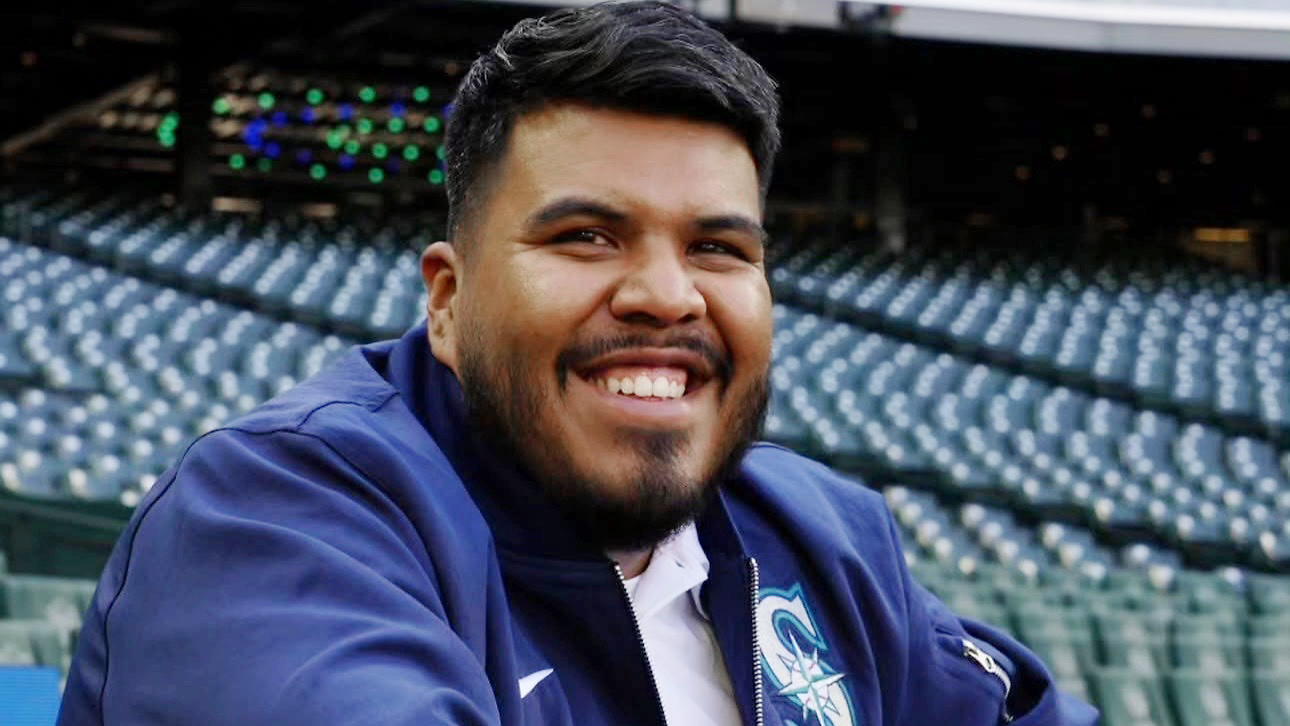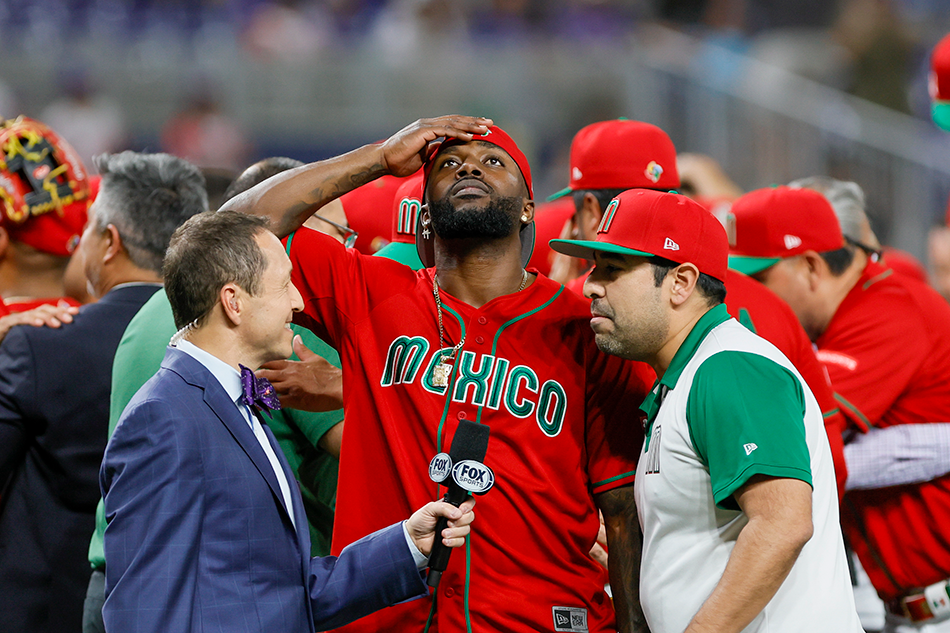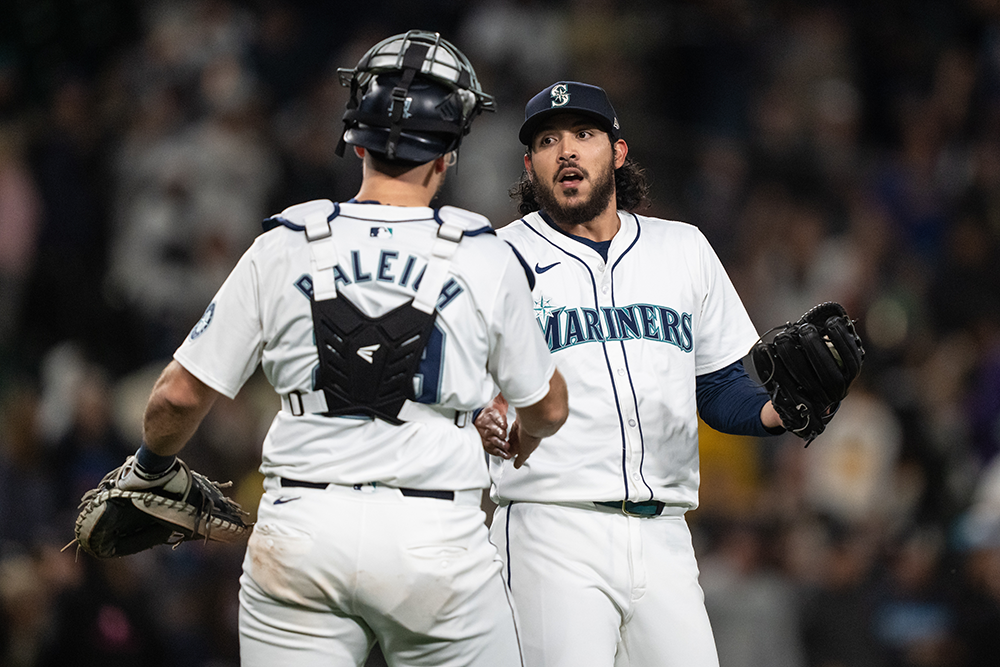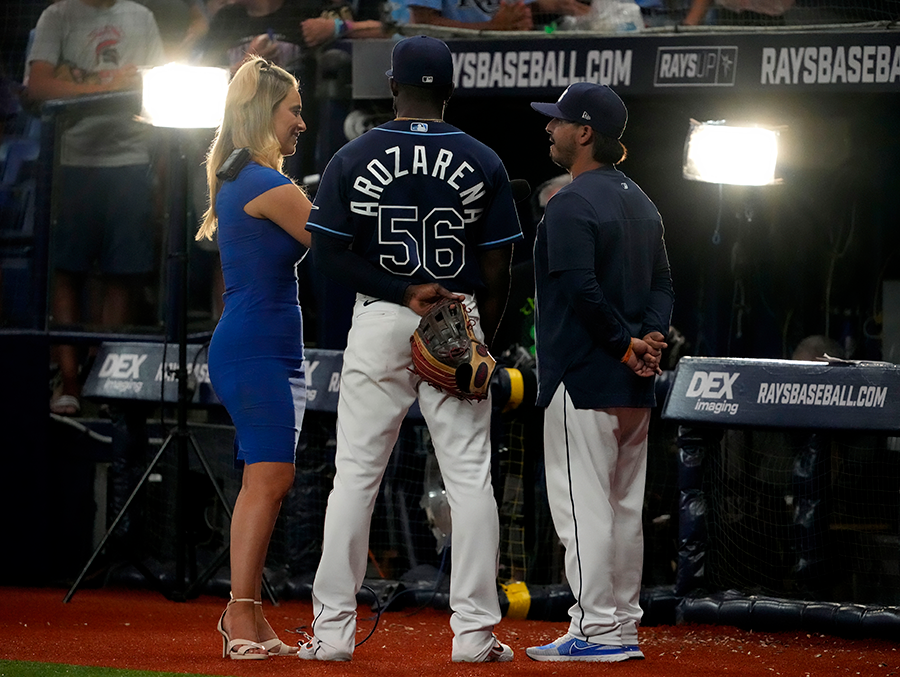
More Than Words: Inside the Important, Unique — And Sometimes Random — Role of MLB Translators
When Andrés Muñoz calls him at 2 a.m. during the season, Freddy Llanos picks up the phone.
But one atypical call last season wasn’t an accidental dial. The Mariners All-Star closer wasn’t in trouble; he didn’t do anything to jeopardize his budding career. No, he just wanted his cat — Matilda — on the team’s airplane and couldn’t make it happen.
No matter what it was, Llanos, Seattle’s senior coordinator of baseball communications, worked to resolve the issue. Because his titles and responsibilities — translator, communications major, missing-wallet-collector and Muñoz’s cat-airplane liaison — always change depending on the situation.
He’s often the first person Spanish-speaking players look toward when talking with English reporters, and the last person they check with when arranging trips and other plans that require fluent language knowledge.
Llanos, 30, wasn’t always a translator, though that’s the direction his life has taken him. His career began as a reporter, graduating from Washington State University in 2017 with a degree in communications. After a stint with Telemundo stations, Llanos joined the Mariners in May 2022.
His job, though, is not one of words and phrases. Not really. It’s employment based on reliability. Can players trust you with one of the most intimate parts of the human experience: speaking? Can teams trust you enough to properly recount what a player said? Can fans trust that what is being translated is the words being spoken?
Yes, or at least that’s the goal Llanos has every time he steps into the office — or in this case, the dugout or media availability.
“A lot of these guys do come out here with the intention to learn,” he said. “A lot of guys, it takes them a little bit longer, but be patient. These guys aren’t hiding from anything. They want to present themselves in the best way possible.”
Since 2016, every MLB team has been required to have a year-round Spanish language translator. For Asian players, like the Los Angeles Dodgers’ Shohei Ohtani or Tampa Bay’s Ha-Seong Kim, translators are often connected to individual players and their contracts.
Players like All-Star outfielder Randy Arozarena believe the message to fans is clearest when his words are said with Llanos’ voice.
“It helps me a lot,” Arozarena, through Llanos’ translation, said. “It helps me send that message, whether it’s a team, whether it’s the fans. Having an interpreter really helps me deliver the message that I want correctly.”

The translation process varies, but the methods fall into three categories: exact, paraphrase or work backwards.
The exact category is the hardest. In essence, jot everything you hear down and then recite what was said. When a translator writes down bullet points, that’s the method they’re using.
Another alternative is to paraphrase. A lot of languages, like Spanish, have words that don’t translate perfectly into another language. English often relies on tone and context clues to distinguish between meanings. To translate between the two, it’s more important to get the overarching meaning than to find the exact word-for-word equivalency.
The final method is to work backward. In other words, translate exactly what was said last and then translate each idea mentioned in the preceding order until you get to the first thing the player mentioned. That way, you don’t forget the last thing they said.
For Llanos, his approach is often a mixture of all three, which is what he learned on the fly from Ichiro Suzuki’s translator, Allen Turner.
When Mariners pitcher Luis Castillo signed a contract extension with Seattle, he needed someone to help him talk to beat reporters. Llanos, who had never translated live, suddenly needed to recite back everything that was said. So, about 15 minutes before the press conference, he found Turner, who helped him walk through the process.
“I don’t have any idea what Luis is gonna say. He could go on for five minutes, and then I have to spew everything back out,” he said. “I was very nervous because I was like, ‘Okay, I’m about to be in front of national TV.’”
Speaking English isn’t a prerequisite for playing baseball, but it can feel like it is sometimes. Most minor league baseball teams are located outside of the states with the highest population of Latin Americans: Texas, California, New York and Florida.
Some of the 16- and 17-year-old prospects can barely order food at Chipotle in English, much less understand nuanced questions posed to them when the media is in the clubhouse, Llanos said.
So when someone like Llanos, who comes from a Spanish-speaking Mexican family, introduces himself to the player, they feel seen.
“My first day in the clubhouse, Eugenio Suárez was ecstatic,” Llanos said of the former Mariners infielder who now plays for the Arizona Diamondbacks. “He was dragging me around every room in the clubhouse, saying, ‘You guys see who we just hired?’ Having a front office person that speaks their language, that looks like them, it does resonate. It resonates a lot.”
Llanos is beloved by the players, none more so than Muñoz. Because, sometimes, the role of a translator is closer to that of an older sibling, pushing them to do things they don’t want to.
He pushed the closer into speaking English more often, according to Llanos, even when Muñoz wanted to stop. It was more of a confidence issue than a language one. Llanos, who was one of the first Mexicans Muñoz knew on the Mariners, wanted him to see that.

When Muñoz pitched for San Diego in 2019, he said he didn’t learn English, despite the Padres putting him into language classes. It wasn’t a refusal to learn — Muñoz often looked at Llanos to make sure he was using proper English grammar or the correct words. Perhaps, it just wasn’t the right fit.
After speaking English with some teammates and rewatching movies in the language, Muñoz started learning how to pronounce words properly. The anxiety of speaking a different language, especially in high-leverage situations like talking to the media, didn’t disappear.
“We don’t want to make mistakes,” Muñoz said. “We don’t want to say something that we don’t want to say. Talking is something really scary. Sometimes you can say things that you regret, and it’s going to be in a video, so you’re going to regret that all your life.”
The biggest example of this nightmare scenario came last May with former Mets pitcher Jorge Lopéz. After a bad outing, Lopéz threw his glove into the crowd. While being interviewed in the clubhouse afterward, he seemed to refer to the team as “the worst team in, probably in the whole f—— MLB.”
While he later posted on his Instagram story that he meant “teammate,” the damage was done.
“Unfortunately, my efforts to address the media in English created some confusion and generated headlines that do not reflect what I was trying to express,” Lopéz said.
The video of Lopéz’s interview quickly circulated on social media, and the Mets designated him for assignment the following day. (probably more for throwing the glove than what he said – an incident to which he also said, ‘I don’t regret it.’)
For Spanish-speaking players, it’s a no-win situation. Rely only on a translator, and part of the media will associate an inability to speak English with problems on the field. Speak a language (usually a player’s second or third one), and face the wrath of a press scrum.
The trust the players put in Llanos is evident from the moment he steps inside the clubhouse. He walks past the coaches, staff and team, joking in Spanish, about people’s nicknames or asking them questions in Spanish to elicit a response.
It’s a bond forged through the 162-game season with Llanos by their side every home and away stint. His job is relentless, working with the players on every home and away stint.
On September 14, 2024, Arozarena stepped up to the plate with the bases loaded and only one out. He sliced a single into the infield where the ball bounced off Rangers shortstop Josh Smith and trickled into the outfield grass.

Usually, Llanos would translate for the outfielder, so when Julio Rodríguez stepped up to translate for Arozarena, Llanos’ friends texted him en masse: Did you get fired? What’s happening? Where are you?
Turns out, Llanos has just taken the day off, and the Mariners told him that someone else would translate. Every other night, though, Llanos is there, standing off to the side, working. Always smiling. Always willing to help — even for a cat.
Category: Seattle Mariners, Top Stories
Tagged: Aaron Judge Andres Munoz freddy llanos Mariners MLB Spring Training MLB translator NL Randy Arozarena Seattle Seattle Mariners Shohei Ohtani Spring Training translators


